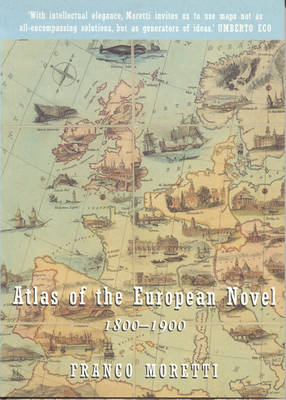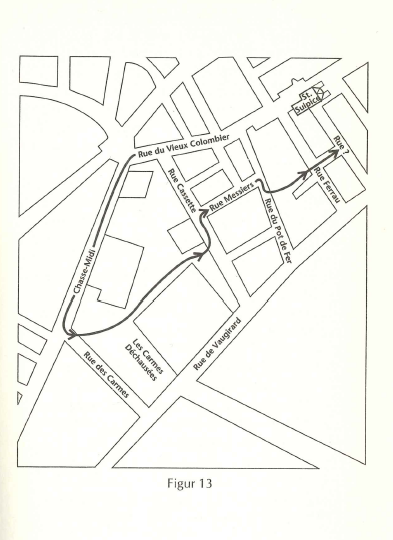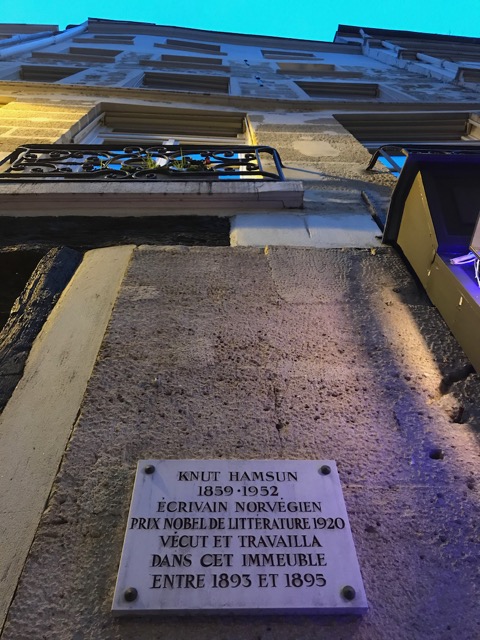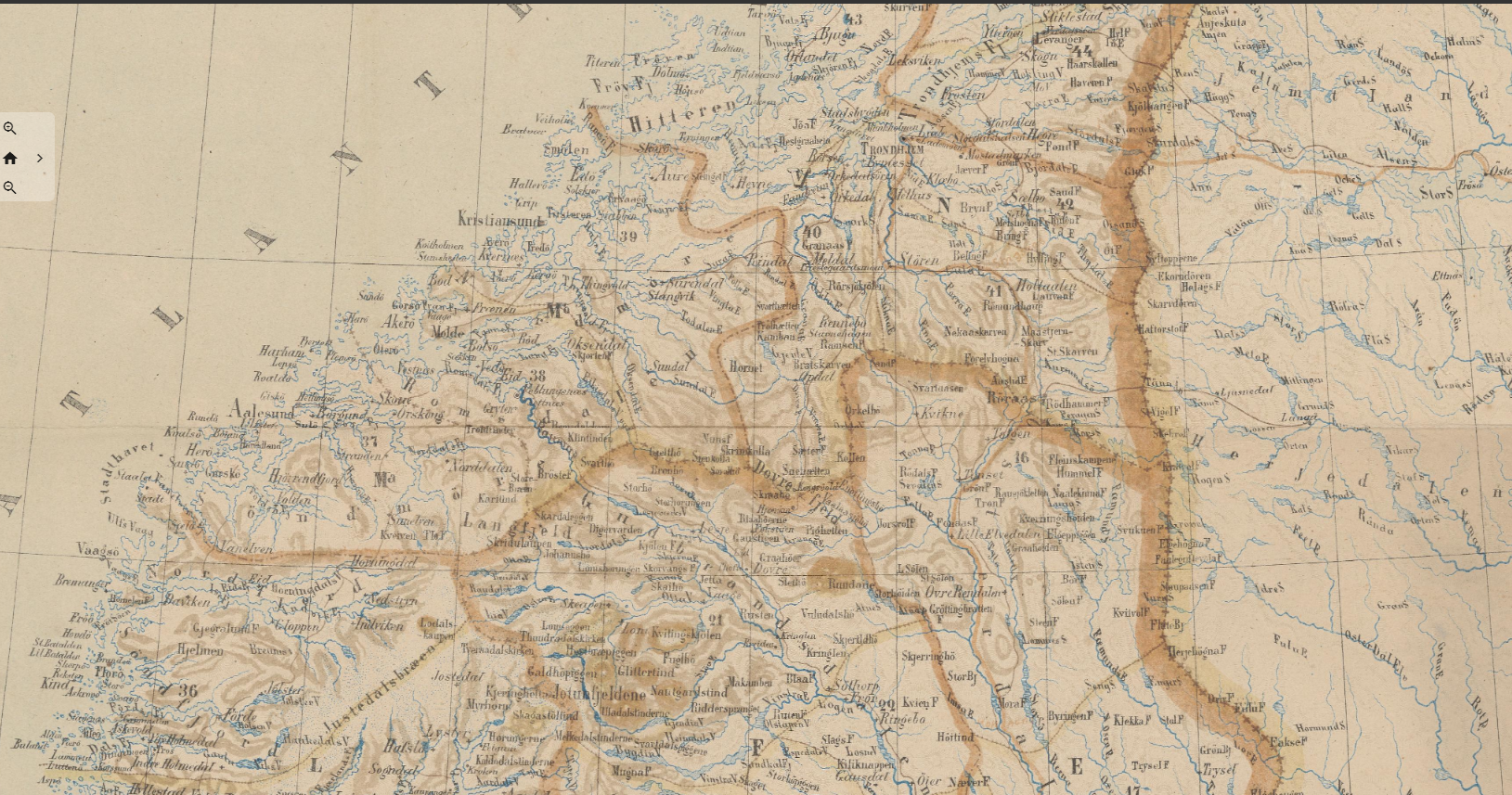By Joachim Friis
In the very beginning of the year where no sign of pandemic crisis had made its way to our latitudes, a big part of the research group on Literature, Technology and Media travelled to Paris. Here, we had been kindly hosted by Centre Universitaire de Norvège à Paris (CUNP) to gather scholars connected to our research between literary representations of places and the development of historical infrastructures around the 19th century. The next couple of days we would head dive into themes on relations between literary geography, infrastructure studies, digital humanities and media history.
From the outset the scene was set: we checked in at a hotel located in front of Sorbonne Université with the nearest café «Critical Theory» living up to its name. After discovering parts of the Sorbonne neighbourhood on the first evening, we were ready for the seminar next morning at Maison des Sciences de l’Homme in the 6th arrondissement, a nice walk from the hotel. Under the main headline «Literary Geographies and Infrastructure 1814-1905» our keynote speakers Gerhard Lauer, Barbara Piatti and Sylvain Briens sparked new life into our research by giving inspiring presentations as well as discussing and revising our most recent project proposal throughout the seminar.
Gerhard Lauer began by introducing us to his work for the Digital Humanities Lab at the University of Basel. Here he is engaging historical and computational methods to look at aesthetic practices broadly speaking. He told us about how he relates digital humanities and German literary history in his project on Heidi, the iconic «book of the Alps» from 1880. His research evolves around how literary traditions have been invented, fx certain descriptions of place and landscape, in books such as Heidi. But also, how the German literature that was mentioned, read and written about in the 1800s is widely different than what has been canonized today.
Moreover, he gave insights into important questions to take into account when working with digital humanities in the research of older literature. Some of the questions that we touched on in the following discussion were how to clearly specify what we want the method of literary geography to cast light on and how to model emotions in DH analysis; how to quantify negative and positive emotions expressed in texts through quite mechanical DH tools such as statistics and algorithms.
After lunch, Barbara Piatti was next up. She holds a phd in German literary studies, has been working for various academic institutions such as ETH Zurich and is now an independent scholar. Her significant relevance to the research group is her strong commitment to literary geography, among other things through her ambitious project A literary atlas of Europe. With her team she has created digital maps from the immense wealth of fictionalized European landscapes and cities. The literary atlases of the project make the specific geography of literature visible digitally. This allows detailed analyses of European places occupied by fictions, thus opening up new horizons for literary geo- and historiography.
We were introduced to some of the maps that Piatti and the rest of the project group have developed. Among them I remember especially the map of Prague that sparked memories of many a past reading experience. Piatti’s maps really makes the wandering reader’s mind visually graspable. Moreover, the different version of maps that she showed us made it clear in just how many ways it is possible to visualize a research project when practicing literary geography in this way.
Before finishing for the day, Anders Malvik and Frode Boasson presented their preliminary thoughts on the geography of Knut Hamsun’s writing and how they have been using DH methods to plot the many geographical mentions in his oeuvre. Also, we discussed the political implications of doing literary geography and how to make the project of literary mapping cast light on political issues. After a well-earned break, we were invited by center leader of CUNP Johannes Hjellbrekke and administrator Kirstin Skjelstad, to an aperitif before we all went out for dinner. This was a great way of getting to know not only the invited speakers but also our contacts at the CUNP. Social gatherings like these also reminded me how the research group’s work is tightly connected to a wider academic field in Europe and abroad. Over dinner we could toast to a successful first day of seminar.
On our second day we started out with Sylvain Briens, who told us about his research under the title «Borealism – for a sensible atlas of the North». Briens has an interesting background for exploring the intersection between technological developments and modern literature. Before becoming a Nordic literature professor at Sorbonne Université, he was an engineer in the telecommunication industry, and he has among other projects studied the representations of the telephone and the train in Swedish literature. In his presentation, Briens traced displacements and transformations in references to the North in fiction. He explained his notion of borealism as a framework for thinking the North in spatial terms without essentializing its meaning.
Afterwards the rest of the seminar consisted of 4 presentations from people who are all part of the research group at NTNU. Christopher Messelt invited us into the work in progress with his phd dissertation on how coastal communities are represented in literature and how themes such as generation, history and local industry are developed in fiction. In the presentation Christopher put an emphasis on the literary lighthouse and offered interesting historical and literary perspectives on the topoi of coastal infrastructures.
Before the official ending of the academic part of our trip, Marit Sjelmo and I presented some tentative ideas on the projects that we want to pursue as (hopefully) future phd-students. Marit told us about her interest in the Norwegian author Maurits Hansen, who is under-researched, but was the first Norwegian author to introduce genres such as the detective story. He has also contributed widely to the national identity of Norway, writing shortly around the time of the ratification of the Norwegian constitution. Jumping forward in time, I presented my analysis of works by the contemporary Danish artist and writer Amalie Smith. She is working with imaginaries of technological tools such as the algorithm and connecting these to older pre-digital tools such as the loom. In the context of the seminar, it was a way to look at how artists today are also investigating and commenting on new technologies surrounding them, just as authors did around the Modern Breakthrough.
Knut Ove Eliassen summed up the seminar with some concluding remarks on what to think about when moving forward with the project. Among other things he reminded us that we must always pose critical questions as to what kinds of knowledge we want to gain from the analytical gestures that we perform with literary geography and digital humanities. To ask ourselves what kinds of spatial mediations we refer to when we talk about geography and how to distinguish between real, fictional and extra-fictional space.
It is not an overstatement to say that we got lots of new energy and inspiration for our various research projects in the city of light, not least on the last afternoon where some of us went on a tour of Hemmingway’s Paris, led by Paris-connoisseur Knut Ove. We ended up in one of the iconic cafés in Montparnasse, before reuniting with everyone for dinner in front of the Seine, saying a proper goodbye to Paris and bringing some of its life back to the cold and dark January of Trondheim. A big thanks to everyone involved in this trip!



